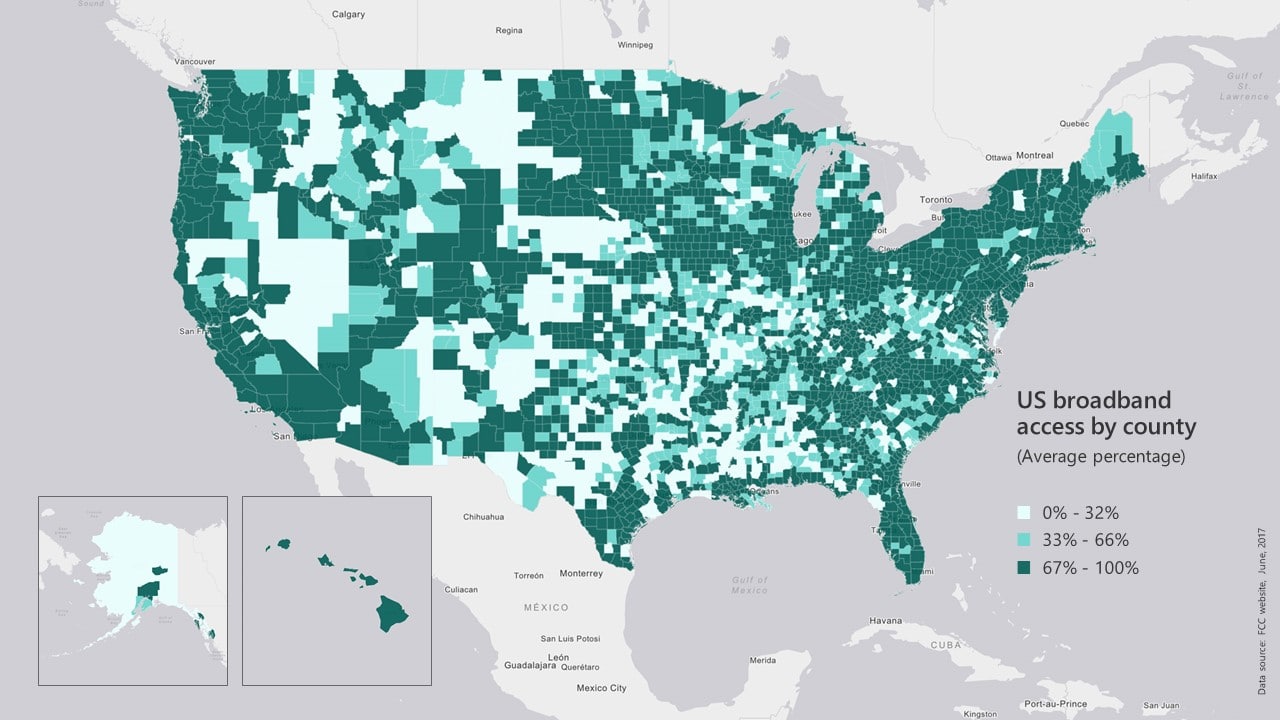Brandie M. Nonnecke is the Working Group Chair for the SF-Bay ISOC’s Working Group on Internet Governance. She is a postdoc at CITRIS and the Banatao Institute at UC Berkeley. Here she writes an opinion post on the risks of lowering the barriers on quality of service in rural areas, and highlights feasible strategies for quality digital inclusion.
Broadband access is vital to our society and economy—creating and strengthening socioeconomic inclusion locally, regionally, and globally. For the 34 million Americans who do not have have access to high-speed broadband, their ability to fully engage in the 21st century digital economy is stifled, perpetuating socioeconomic divides.
This is especially true in rural America where 39 percent of the population lacks access. For many rural Americans, low-quality mobile broadband is their only option and a recent move by the FCC suggests it will remain this way.
Risks of Lowering Speed Benchmarks
The FCC is proposing to reduce download speed benchmarks from 10 Mbps to 5 Mbps to determine subsidy eligibility through its Mobility Fund II, a universal service fund of $4.53 billion set aside to support rural mobile broadband development for a term of ten years. This speed reduction comes in response to a petition submitted on behalf of T-Mobile, which cited evidence that provision of 10 Mbps is not consistently achievable in urban settings by the four major national wireless carriers (AT&T, Sprint, T-Mobile, and Verizon Wireless) and inferred that requiring carriers to do so in rural settings, which face greater technological challenges, is unrealistic.
While lowering the speed benchmark has the potential to encourage carriers to invest in under- and unserved areas, the question remains whether 5 Mbps—a speed barely capable of supporting streaming video service—is sufficient to constitute meaningful connectivity for rural communities. Policy changes like these reveal an assumption that any connectivity, even low-quality connectivity, will benefit rural communities. Yet, to borrow parlance from the private sector itself—quality matters.
High-speed internet access is a driver of opportunity, enabling critical social and economic inclusion. Speed targets of 5 Mbps limit opportunities for rural populations to take advantage of socio-economic levers like telework, telemedicine, and online education. Mobile broadband offers great promise; yet it should not be thought of as a substitute to fixed broadband but rather its complement.
“Consumers who are mobile only often find themselves in such a position, not by choice but because they cannot afford a fixed connection. Today, mobile and fixed broadband are complements, not substitutes.” – Commissioner Mignon L. Clyburn, FCC
New Strategies for Inclusive Broadband Growth
Advancements in fifth-generation wireless networks (5G) and the reallocation of the 600 MHz range of underused spectrum between TV broadcasts, known as Super WiFi for its ability to traverse wide distances and natural and manmade obstacles, hold great promise for the provision of mobile broadband at significantly faster speeds than currently available.
New strategies like Microsoft’s Rural AirBand Initiative are encouraging. By tapping into the 600 MHz range of underused spectrum, Microsoft estimates that it can provide mobile broadband at speeds greater than 10 Mbps to approximately 2 million people by 2022. The initiative also intends to support diverse internet access strategies, including public-private partnerships and creation of open access technologies capable of operating on the 600MHz band.
Federal initiatives like the Mobility Fund II should continue in this vein by supporting public-private partnerships and open access connectivity strategies; streamlining access to infrastructure and right of way; and reallocating, lending, leasing, and loaning spectrum. For much of rural America, mobile broadband is a promising step in enabling greater inclusion in the digital economy. But policies that prioritize incumbents and provision of low-quality mobile broadband in rural areas risk further widening the digital divide.
Recommended Reading:
- For an engaging discussion on barriers and opportunities for creating inclusive internet rollout and adoption strategies, check out the 2017 IGF-USA panel chaired by Brandie “Promoting a more Inclusive Internet” at tiny.cc/InclusiveInternet.
- Signs of digital distress: Mapping broadband availability and subscription in American neighborhoods by The Brookings Institute
Disclosure: Brandie Nonnecke has received funding support from Microsoft for her research while at UC Berkeley.
 ISOC Bay Area – Internet Society
ISOC Bay Area – Internet Society ISOC Bay Area – Internet Society
ISOC Bay Area – Internet Society